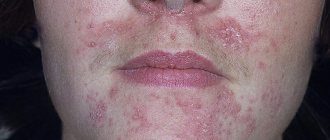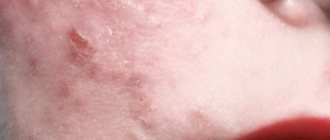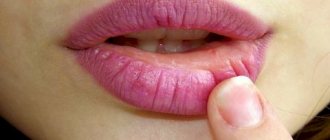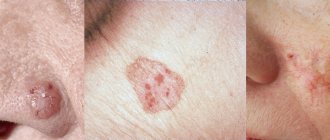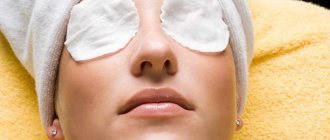An allergic reaction is a pronounced response of the body’s immune system to exposure to a protein substance (allergen). Every year there are more and more patients suffering from various forms of the disease. One of the most common reactions is an allergy to the eyes involving the skin around them2.
The problem significantly worsens a person’s life, so medicine is constantly improving treatment options. Now you can effectively cope with the reaction to the eyes and even prevent its occurrence1.
Causes of an allergic reaction
Allergies on the face around the eyes are directly related to the contact of irritants with the skin and (or) the mucous membrane of the eyeball. An excessive response of the immune system occurs not only when an allergen comes into contact with the skin, but also when the body is exposed systemically. Therefore, there are many reasons for the formation of allergy symptoms in the eye area.
Main factors causing the problem:
- Plant pollen during the flowering period (three periods are distinguished: flowering of trees, bushes and grasses, field grasses);
- Room dust containing fungi;
- Animal fur (allergens can be any pets or wild animals);
- Bird fluff;
- Contact lenses;
- Sunlight (the occurrence of a pseudo-allergic reaction);
- Medicines (local drops, ointments, creams or systemic drugs);
- Household chemicals (depending on the composition, there can be either a true or false allergy);
- Cosmetics (any cosmetics, except special hypoallergenic ones, can cause a response from the body).
Finding out the cause of the problem is a necessary step in successfully eliminating clinical manifestations. The task of a person who suffers from an allergy to the skin around the eyes is to understand the mechanism of its occurrence in order to remove it from his life. In some cases, this is enough for a full life.
Diagnostics
During the consultation, the doctor examines the patient’s complaints and collects his medical history and conducts a physical examination. He selects diagnostic methods to determine why the eyelids and area around the eyes itch. These include:
- Clinical blood test
- Allergy tests
- Microscopic analysis of eyelashes
- Bacteriological analysis of eyelid scrapings
If the cause of itching lies in a systemic disease, the doctor may prescribe additional diagnostic procedures. They will help you find out why your eyes itch and how to eliminate the risk of recurrence of symptoms.
Allergy symptoms around the eyes
Recognizing an allergic reaction and distinguishing it from other diseases of the visual system is not very difficult. One of the main points is the sudden onset of symptoms and their connection with any irritant. It is not always immediately clear what exactly the allergen is, then you need to evaluate the symptoms.
The following signs indicate an allergic nature of the problem:
- Burning and stinging in the eyes;
- Drying of the mucous membrane;
- Swelling of the eyelids (swelling can be so severe that the eyelids cannot be opened);
- Severe itching (may be in the eyes, nose, ears at the same time);
- Lacrimation (profuse);
- Deterioration of vision (temporary, but can be permanent, depending on the type and duration of the disease);
- Photophobia;
- Redness of the skin around the affected area;
- The appearance of small pinpoint rashes (urticaria).
Clinical manifestations are usually symmetrical. The only exceptions are situations where the local remedy was used only on one eye.
Where can I get appropriate advice?
You can find out the characteristics of various medical centers in Moscow and not only choose a competent specialist to visit, but also make an appointment with an ophthalmologist at home, using the information content of our Directory for private clinics “Your Doctor”, which additionally allows you to theoretically familiarize yourself with the pathological disorders of interest.
Publication date: 2018-02-07
Types of allergic reaction
Exposure to allergens can cause different types of body responses. Depending on the causes, mechanisms, and manifestations, allergies in the eye area are divided into:
- Vernal keratoconjunctivitis. A chronic seasonal disease that is typical for children and adolescents during the period of hormonal changes in the body.
- Hay fever. Seasonal response of the body to irritation by plant pollen. As a rule, it occurs annually during the flowering period of a certain plant. Any pollen can cause a problem, but most often it is ragweed and birch3.
- Chronic form. In the case of constant exposure to an allergen or a severe reaction, an immune response occurs that worries for weeks, then passes and occurs again.
- Acute reaction. Periodic allergies that occur specifically at the moment of exposure to an allergen. After it disappears, the reaction quickly passes and does not occur until contact occurs again.
Read also
100 facts about my best friend. 100 words about your best friend?
Victims of plastic surgery: Melanie Griffith.
The secret of Ekaterina Andreeva’s youth and beauty is simple - it’s everyday sport!
Asterisk balm for cough. Useful properties of balm “Zvezdochka”.
Spicy salted herring.
Low-calorie cutlets for a healthy dinner.
Is it possible not to treat an allergic reaction?
Clinical manifestations in the eye area cause significant discomfort. The condition will worsen with continued contact with the allergen. But even stopping exposure to the irritant does not always provide full recovery.
An integrated approach to the treatment of an allergic reaction: avoiding allergens in combination with taking medications gives a chance for a full recovery and a return to a full life. In addition, timely use of medications that relieve the condition allows one to avoid serious complications when allergies turn from local to systemic3.
Symptoms requiring increased attention:
- Swelling of the entire face;
- Difficulty breathing;
- Swelling of the tongue;
- Increased breathing;
- Increased heart rate;
- Blue face;
- Reduced pressure.
Emergency care for suspected angioedema or anaphylactic shock should begin with calling an ambulance1. Eye allergies rarely lead to such complications. The key role here is played by the duration of exposure to the allergen and proper treatment.
Folk remedies
In the fight for beauty, all means are good. In addition, there are a number of products that can improve the condition of the skin that are always at hand. One way that always works is masks. They make them from literally everything.
1. Potatoes. For masks, it is rubbed on a fine grater and the resulting paste is applied to the eye area using cotton swabs for 2 or 3 minutes. The healing properties of potatoes have not yet been fully studied, but the fact that it has a beneficial effect on the skin is undeniable. 2. Dill seeds. For the mask, these seeds are poured into a small fabric bag and placed in fairly hot water. Take out the bag after a few minutes, squeeze it out and apply it to your eyes for 5 minutes. 3. Herbs. Decoctions of cornflower and string are considered especially effective.
Treatment of skin allergies around the eyes
The first priority action when signs of allergy occur is to stop contact with the allergen. If symptoms appear for no apparent reason, you should change your position, take a shower, and wash your face. This increases your likelihood of reducing your exposure to the allergen, even if you don't understand what caused the symptoms.
Additionally, antihistamines must be taken, preferably second generation4. These drugs include drugs based on cetirizine, for example, Cetrin. The work of drugs in this group is to block histamine receptors, thereby relieving the clinical manifestations of allergies. The drugs begin to act in 15-20 minutes, so they quickly improve a person’s condition4.
Additional general recommendations:
- Do not rub your eyes, this aggravates the clinical manifestations.
- Use corticosteroid ointments with caution (it is advisable to consult with specialists before using this).
- Choose your antihistamine carefully.
- During treatment, avoid cosmetics, creams and any chemical products for your facial skin.
- If you are allergic to animals or pollen, do wet cleaning more often, wash clothes after returning from the street or contact with an animal.
The rate of disappearance of symptoms is influenced by: the amount and duration of exposure to the allergen, the body’s reactivity, and the use of an antihistamine.
Dioptric defects
It can be difficult for parents to detect dioptric defects that cause the child to blink his eyes (how to treat this symptom depends on the correct correction of the disorder)
Please note if your baby:
- squints;
- covers one eye;
- has an unnatural head tilt;
- complains of headache;
- bends low when writing.
Farsightedness
Farsightedness or hypermetropia is present in every child immediately after birth; the defect usually disappears over time. But in some children it persists and is manifested by poor vision at close range. After birth, the eyes are shorter in the anteroposterior axis than necessary for proper vision. In children, the eye continues to develop and grow. After reaching “normal” sizes, vision stabilizes. If the eye remains short, we are talking about farsightedness. In childhood and adolescence, the defect often does not appear. The eyes have the ability to adapt well; they compensate for the defect even with several diopters. But the child has to make more efforts to see, squint his eyes, which can cause fatigue, headaches, restlessness, etc.
Myopia
Myopia often appears only at school age, when the child cannot read text on the board normally, writes with his nose, and avoids certain games. This disorder is also called myopia. This is a refractive defect of the eye, in which a child, looking into the distance, perceives an unclear image of the observed object. The disorder usually increases gradually. Around the age of 20, its development usually slows down with minor changes until approximately 30 years of age.
Myopia is a very common vision defect in children. One of its signs is constant frequent blinking of the eyes. It can be congenital (in premature babies) or acquired.
The development of myopia is facilitated by the current lifestyle, in which children spend most of their free time playing games on a computer, tablet, mobile phone, or watching TV (close viewing).
Stimulates vision, has a positive effect on the disorder by staying in natural light and frequently focusing on distant objects. This is associated with activities performed by children on the street, on the playground. Therefore, being in the fresh air is good not only for health, but also for vision.
Astigmatism
Astigmatism, a cylindrical defect of the eye, is another cause of frequent blinking. The disorder is caused by abnormal curvature of the cornea and sometimes the lens. In a healthy eye, the cornea is regular, shaped like a round ball, so light rays passing through it are refracted equally in all directions. When the cornea is irregularly shaped (like a rugby ball), light is refracted differently in areas of greater or lesser curvature. As a result, the rays do not meet on the retina, and vision is blurred and distorted. The child blinks more often to create greater acuity.
The defect is usually congenital, but changes in the cornea can also occur due to inflammation and eye damage. The cause can also be diseases of the cornea, surgery, allergies, and neuralgia.
Prevention measures
Allergies to the skin under the eyes can only be prevented if you already know what exactly causes them. In such a situation, you can take an antihistamine in advance so that the symptoms are weaker or do not appear at all4.
To enjoy a full life, it is not recommended to ignore the presence of allergies. Timely administration of the drug will help to cope with the problem.
Bibliography:
- Egorov A.E. Treatment of allergic diseases of the anterior segment of the eye / A.E. Egorov // Russian Medical Journal. – 2000. – T. 1. – Issue. 2. – pp. 52–55.
- Kurbacheva O. M. Pollinosis. Modern aspects of diagnosis and treatment of allergic diseases. Mater. conf. - M. - 2009. - P. 31 – 37.
- Maichuk Yu. F. Seasonal hay fever is the most common form of ocular allergosis. Part I. Epidemiology, etiology, pathophysiology, clinical picture, diagnosis. Ross. ophthalmol. magazine. — 2010. — No. 1. — P. 37 – 41.
- Tataurshchikova N.S. Modern aspects of the use of antihistamines in the practice of a general practitioner. // Pharmateka. 2011. No. 11. pp. 46–50.
Our advantages
"Moscow Eye Clinic" offers comprehensive diagnostics and effective treatment of eye diseases. The use of the most modern equipment and the high professional level of specialists working in the clinic eliminate the possibility of diagnostic errors.
Based on the results of the examination, each visitor will be given recommendations on choosing the most effective methods of treating the eye pathologies identified in them. By contacting the Moscow Eye Clinic, you can be sure of quick and accurate diagnosis and effective treatment.
All questions you are interested in can be asked to specialists by calling 8 (800) 777-38-81 and 8 (499) 322-36-36 or online using the appropriate form on the website.
Mironova Irina Sergeevna
Special exercises
There are several exercises that will help you cope with mild redness caused by demodicosis, sun rays, staying in a solarium, infectious pathologies, gastrointestinal diseases or allergies. The effect is achieved through the work of facial muscles and normalization of blood circulation. The following exercises will be the most effective:
- Strong squinting of the eyes followed by widening. Repeat five times.
- Frequent blinking for 10 seconds with a break of 5 seconds. Perform 10 approaches.
- Opening your mouth wide for two seconds followed by closing it for the same amount of time. Do five approaches.
- Curl your lips into a tube and pull them forward for 5 seconds. Perform three to five approaches.
Using exercises is useful for both adults and children.
